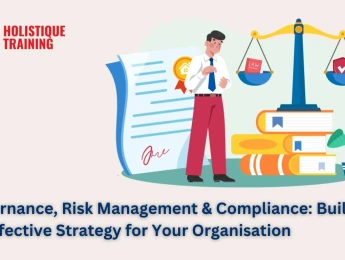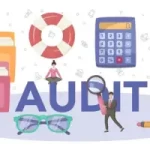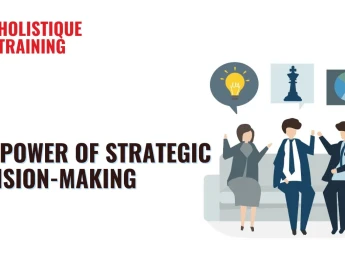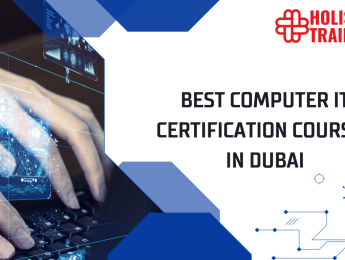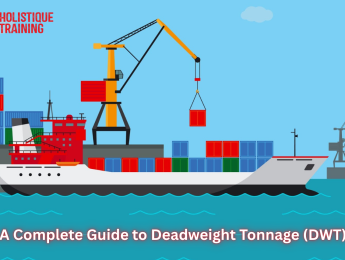Table of Contents
- Introduction
- What is Governance, Risk, and Compliance (GRC)?
- GRC and OCEG (The History)
- Why Is GRC Important?
- 1. Enhanced Decision-Making
- 2. Increased Operational Efficiency
- 3. Risk Mitigation
- 4. Regulatory Adherence
- 5. Improved Stakeholder Trust
- 6. Resilience and Adaptability
- 7. Performance Optimisation
- 8. Culture of Accountability
- Why Do Companies Implement GRC?
- 1. Regulatory Compliance
- 2. Risk Management
- 3. Improved Decision-Making
- 4. Enhanced Operational Efficiency
- 5. Strengthened Reputation and Brand Trust
- 6. Facilitation of Strategic Alignment
- 7. Proactive Crisis Management
- 8. Data-Driven Insights
- 9. Talent Attraction and Retention
- 10. Competitive Advantage
- The Components of GRC
- Key Stakeholders:
- GRC Framework:
- GRC Maturity:
- What Are the Common GRC Tools?
- 1. GRC Software Platforms
- 2. User Management Tools
- 3. Auditing Tools
- 4. Security Information and Event Management (SIEM) Tools
- 5. Risk Assessment Tools
- 6. Policy Management Tools
- 7. Reporting and Analytics Tools
- The Challenges of GRC Implementation
- Cultural Resistance:
- Complexity of Regulations:
- Resource Constraints:
- Data Silos:
- Lack of Leadership Support:
- How to Implement an Effective GRC Strategy
- 1. Establish Clear Objectives and Scope
- 2. Engage Stakeholders Across the Organisation
- 3. Develop a Comprehensive GRC Framework
- 4. Leverage Technology and Tools
- 5. Conduct Training and Awareness Programs
- 6. Monitor and Evaluate GRC Activities
- 7. Continuously Improve the GRC Strategy
- Conclusion
Introduction
Navigating the complex world of business today requires organisations to manage many factors that influence their operational efficiency and reputation. Governance, Risk Management, and Compliance (GRC) emerge as pivotal elements that shape strategic decision-making, ensuring organisations meet their objectives while adhering to regulations. This blog post will delve into the essential components of GRC, exploring its definition, history, significance, and practical implementation strategies. Additionally, we will discuss the challenges associated with GRC and provide insights into effective tools and methodologies for creating a robust GRC framework.
What is Governance, Risk, and Compliance (GRC)?
Governance, Risk Management, and Compliance, commonly called GRC, represents an integrated approach organisations use to align their operations with business objectives, manage risks effectively, and ensure adherence to regulatory standards.
- Governance refers to the framework of policies, procedures, and controls that guide decision-making and accountability within an organisation. It establishes the rules for organisational behaviour, ensuring that all stakeholders are aligned with the company's goals.
- Risk Management involves identifying, assessing, and prioritising risks, followed by coordinated efforts to minimise, monitor, and control the probability or impact of unfortunate events. Effective risk management helps organisations avoid pitfalls that could derail their operations.
- Compliance ensures an organisation adheres to external regulations, laws, and internal policies. Compliance frameworks are critical in safeguarding against legal repercussions and maintaining a positive organisational reputation.
Together, these elements form a cohesive strategy that enhances decision-making processes, promotes transparency, and fosters a culture of accountability within organisations.
GRC and OCEG (The History)
The evolution of GRC can be traced back to the early 2000s when the need for a comprehensive approach to governance and risk management became increasingly evident. The term “GRC” gained traction through the work of the Open Compliance and Ethics Group (OCEG), a nonprofit organisation established to provide thought leadership in governance, risk management, and compliance.
OCEG introduced the “principled performance” concept, emphasising aligning governance, risk management, and compliance efforts with organisational performance goals. This alignment was crucial in helping organisations navigate the increasingly complex regulatory landscape, particularly after high-profile corporate scandals highlighting the consequences of inadequate governance and compliance practices.
As organisations faced mounting regulatory pressures and the global business environment became more volatile, the GRC framework emerged as a vital tool for managing these challenges. OCEG's efforts led to the development of the GRC Capability Model, which provided organisations with a structured approach to implementing GRC principles.
Why Is GRC Important?
The significance of Governance, Risk Management, and Compliance (GRC) in today’s organisational landscape cannot be overstated. As businesses face increasing complexities—from global regulatory requirements to rapidly changing market dynamics—the integration of GRC practices has become essential. The importance of GRC can be understood through several interconnected dimensions that contribute to an organisation’s overall effectiveness, resilience, and reputation.
1. Enhanced Decision-Making
Effective GRC frameworks empower organisations to make informed decisions based on comprehensive data analysis. By integrating governance structures with risk management processes, organisations can identify potential threats and opportunities that may impact strategic objectives. GRC provides decision-makers with the necessary insights to weigh risks against rewards, fostering a culture where decisions are aligned with organisational goals. This informed decision-making process ultimately enhances agility, enabling organisations to respond proactively to environmental changes.
2. Increased Operational Efficiency
Implementing a cohesive GRC strategy can significantly streamline operations. By breaking down silos between governance, risk management, and compliance functions, organisations can eliminate redundancies and inefficiencies. This integrated approach enables teams to collaborate effectively, share information seamlessly, and ensure that all aspects of governance and compliance are addressed holistically. As a result, organisations can allocate resources more effectively, reduce operational costs, and improve overall productivity.
3. Risk Mitigation
One of the primary objectives of GRC is to identify, assess, and mitigate risks that could hinder an organisation’s ability to achieve its goals. By adopting a proactive approach to risk management, organisations can implement controls and strategies that minimise the likelihood of adverse events. This proactive stance protects against financial losses and safeguards the organisation’s reputation. Organisations that effectively manage risks are better positioned to avoid penalties and legal repercussions in a landscape where regulatory scrutiny is high.
4. Regulatory Adherence
With the evolving regulatory landscape, organisations face a myriad of compliance requirements. A robust GRC framework helps organisations navigate these complexities by establishing processes to monitor and ensure compliance with relevant laws and regulations. This adherence is crucial in preventing legal liabilities and protecting the organisation from fines and sanctions. Moreover, effective compliance fosters trust with regulators, investors, and other stakeholders, reinforcing the organisation’s commitment to ethical practices.
5. Improved Stakeholder Trust
GRC frameworks promote organisational transparency and accountability, vital for building stakeholder trust. When stakeholders, including customers, employees, investors, and regulators, see that an organisation has robust governance and compliance practices, their confidence in it increases. Trust is a significant currency in today’s business environment, influencing customer loyalty, investor relationships, and overall brand reputation. Organisations prioritising GRC demonstrate a commitment to ethical conduct and responsible governance, enhancing their standing in the marketplace.
6. Resilience and Adaptability
The dynamic nature of today’s business environment necessitates that organisations be resilient and adaptable. GRC equips organisations with the tools and frameworks to respond effectively to disruptions, whether from economic shifts, technological advancements, or crises. By establishing a solid governance and risk management foundation, organisations can pivot quickly, ensuring continuity and stability even in uncertain times. This resilience protects the organisation from immediate threats and positions it for long-term success in a rapidly changing landscape.
7. Performance Optimisation
GRC is not merely about compliance; it also plays a critical role in optimising overall organisational performance. By aligning governance, risk management, and compliance efforts with strategic objectives, organisations can identify areas for improvement and leverage opportunities for growth. This alignment ensures that GRC initiatives support broader business goals, driving performance and enhancing competitive advantage. Furthermore, organisations that integrate GRC into their performance measurement processes can better track progress, assess outcomes, and make data-driven adjustments to strategies.
8. Culture of Accountability
Implementing GRC fosters a culture of accountability within organisations. Organisations can delineate responsibilities and expectations at all levels by establishing clear governance structures and processes. This clarity encourages employees to take ownership of their roles in governance and compliance, fostering a culture where ethical behaviour and risk awareness are prioritised. Such a culture enhances individual performance and contributes to the organisation’s overall integrity and reputation.
The importance of GRC extends beyond regulatory compliance; it is a comprehensive approach that enhances decision-making, operational efficiency, risk mitigation, stakeholder trust, and overall organisational resilience. As businesses navigate a complex and ever-evolving landscape, embracing GRC principles becomes imperative for long-term success and sustainable growth. By integrating governance, risk management, and compliance efforts, organisations position themselves to mitigate risks and seize opportunities that drive performance and innovation.
Why Do Companies Implement GRC?
Implementing Governance, Risk Management, and Compliance (GRC) frameworks is an organisation's strategic decision to enhance their operational effectiveness and safeguard their interests. Several compelling reasons drive companies to adopt GRC practices, each contributing to a more robust organisational structure and an improved ability to navigate complex environments. Here are the key reasons why companies implement GRC:
1. Regulatory Compliance
As regulatory landscapes continue to evolve, organisations must comply with many local, national, and international laws. Non-compliance can lead to severe penalties, legal repercussions, and reputational damage. GRC frameworks provide a structured approach to monitoring and adhering to regulatory requirements, ensuring that organisations are aware of and capable of meeting their compliance obligations. By implementing GRC, companies can proactively manage compliance risks and maintain good standing with regulators.
2. Risk Management
Companies operate in environments fraught with risks, from financial uncertainties and operational inefficiencies to cybersecurity threats and reputational damage. Implementing GRC enables organisations to systematically identify, assess, and manage these risks. By creating a comprehensive risk management strategy, organisations can not only mitigate potential threats but also capitalise on opportunities that may arise. This proactive risk management approach minimises the impact of adverse events and strengthens the organisation's overall resilience.
3. Improved Decision-Making
GRC frameworks facilitate informed decision-making by providing a holistic view of the organisation’s governance, risk, and compliance landscape. By integrating relevant data and insights into the decision-making process, companies can make choices that align with their strategic objectives and risk tolerance. This improved decision-making capability enhances organisational agility and responsiveness, allowing businesses to navigate changes and challenges more effectively.
4. Enhanced Operational Efficiency
Implementing GRC often leads to improved operational efficiency. By breaking down silos between governance, risk management, and compliance functions, organisations can eliminate redundancies and streamline processes. This integration fosters department collaboration, ensuring all teams are aligned and working toward common goals. As a result, organisations can optimise resource allocation, reduce costs, and improve productivity.
5. Strengthened Reputation and Brand Trust
In an era where corporate transparency is paramount, organisations must demonstrate their commitment to ethical behaviour and responsible governance. A well-implemented GRC framework enhances an organisation’s reputation by showcasing its compliance and risk management dedication. This strengthened reputation fosters trust among stakeholders, including customers, employees, investors, and partners. Companies prioritising GRC are more likely to attract and retain customers who value ethical practices, thereby boosting brand loyalty.
6. Facilitation of Strategic Alignment
GRC practices enable organisations to align their governance and compliance efforts with their strategic objectives. By integrating GRC into their overall strategy, companies can ensure that their risk management and compliance initiatives support broader business goals. This strategic alignment enhances the organisation’s ability to navigate challenges while pursuing growth opportunities. Additionally, it fosters a culture of accountability and responsibility, as all employees understand how their roles contribute to the organisation’s success.
7. Proactive Crisis Management
The implementation of GRC equips organisations with the tools and frameworks necessary for effective crisis management. By anticipating potential risks and establishing contingency plans, organisations can respond swiftly to crises, minimising disruption and damage. A proactive GRC approach helps companies identify vulnerabilities, enabling them to take preemptive measures that enhance their crisis readiness. This capability protects the organisation and reinforces stakeholder confidence in managing challenges effectively.
8. Data-Driven Insights
GRC frameworks leverage data analytics to give organisations valuable insights into operations, risks, and compliance efforts. By analysing data, companies can identify trends, assess performance, and make informed decisions based on real-time information. This data-driven approach enhances organisational transparency and accountability, as stakeholders can see how GRC initiatives impact overall performance. Moreover, these insights enable continuous improvement, allowing organisations to refine their GRC strategies.
9. Talent Attraction and Retention
Organisations prioritising GRC practices often find attracting and retaining top talent easier. Employees increasingly seek workplaces that demonstrate ethical behaviour, strong governance, and a commitment to compliance. By implementing effective GRC frameworks, organisations create an environment where employees feel valued and empowered to contribute to governance and compliance efforts. This culture of accountability not only enhances job satisfaction but also fosters loyalty and engagement among employees.
10. Competitive Advantage
Companies that effectively implement GRC can gain a competitive advantage in their respective markets. Organisations position themselves as industry leaders by proactively managing risks, ensuring compliance, and enhancing operational efficiency. This advantage is particularly significant in industries that are heavily regulated or face intense competition, as effective GRC practices can differentiate organisations from their peers. Companies prioritising GRC demonstrate their commitment to ethical practices, risk management, and operational excellence, enhancing their reputation and attractiveness to customers and investors alike.
Implementing Governance, Risk Management, and Compliance (GRC) frameworks is driven by many factors contributing to an organisation's success. From ensuring regulatory compliance and improving decision-making to enhancing operational efficiency and strengthening reputation, GRC serves as a vital component of modern organisational strategy. As businesses navigate an increasingly complex environment, embracing GRC practices will continue to be essential for achieving long-term resilience, sustainability, and competitive advantage.
The Components of GRC
Understanding the components of GRC is essential for successful implementation. These components include:
Key Stakeholders:
GRC involves various stakeholders, including executives, board members, compliance officers, risk managers, and employees. Engaging all relevant parties ensures a holistic approach to governance and risk management.
GRC Framework:
A GRC framework outlines the processes, policies, and technologies required to implement GRC effectively. This framework provides a structured approach to managing governance, risk, and compliance activities.
GRC Maturity:
Organisations should assess their GRC maturity level, which indicates how effectively they manage governance, risk, and compliance. Maturity models provide a roadmap for improvement, helping organisations progress from initial awareness to optimised GRC practices.
What Are the Common GRC Tools?
Implementing GRC strategies often involves using specialised tools and software designed to facilitate governance, risk management, and compliance activities. Common GRC tools include:
1. GRC Software Platforms
GRC software platforms are comprehensive solutions that integrate various GRC functionalities into a single application. These platforms allow organisations to automate and streamline their governance, risk management, and compliance processes. Key features often include:
- Policy Management: Tools for creating, updating, and distributing policies to ensure that all employees are aware of governance standards and compliance requirements.
- Risk Assessment and Management: Features that allow organisations to identify, assess, and prioritise risks based on their potential impact and likelihood. This often includes risk heat maps and dashboards for visualising risk data.
- Compliance Tracking: Tools for monitoring compliance with relevant regulations and standards, helping organisations identify non-compliance areas and track remediation efforts.
- Audit Management: Capabilities for planning, conducting, and managing audits, as well as tracking findings and corrective actions.
Examples of popular GRC software platforms include RSA Archer, MetricStream, LogicManager, and ServiceNow GRC. These tools provide a centralised location for GRC activities, promoting team collaboration and efficiency.
2. User Management Tools
User management tools are essential for ensuring that the right individuals have access to GRC information and systems. These tools help organisations effectively manage user permissions and roles, enhancing security and compliance. Key features include:
- Role-Based Access Control (RBAC): Allows organisations to define user roles and assign permissions based on those roles, ensuring that sensitive information is only accessible to authorised personnel.
- User Provisioning and Deprovisioning: Tools for managing user accounts throughout their lifecycle, from onboarding to offboarding. This is critical for maintaining compliance with user access and data protection regulations.
- Audit Trails: Features that track user activity within GRC systems, providing a transparent record of who accessed what information and when, which is essential for compliance audits.
3. Auditing Tools
Auditing tools are designed to facilitate internal and external audits by providing structured processes for assessing compliance and risk management practices. Key functionalities include:
- Audit Planning and Scheduling: Tools for defining the scope of audits, scheduling audit activities, and assigning responsibilities to auditors.
- Findings Management: Features that enable auditors to document findings, track issues, and manage corrective actions in a centralised manner.
- Reporting Capabilities: Tools that generate audit reports to communicate findings and recommendations effectively to stakeholders, ensuring that the organisation can address issues promptly.
By leveraging auditing tools, organisations can enhance their audit processes, improve transparency, and demonstrate accountability to stakeholders.
4. Security Information and Event Management (SIEM) Tools
SIEM tools play a crucial role in enhancing an organisation’s risk management capabilities, particularly in the realm of cybersecurity. These tools aggregate and analyse security data from various sources, helping organisations to detect and respond to potential threats. Key features include:
- Real-Time Monitoring: Continuous surveillance of network activity and security events, enabling organisations to identify suspicious behaviour and potential security incidents.
- Incident Response: Tools that assist organisations in responding to security incidents by providing workflows, alerts, and playbooks for incident management.
- Compliance Reporting: Features that help organisations demonstrate compliance with cybersecurity regulations and standards by generating reports on security incidents and responses.
5. Risk Assessment Tools
Risk assessment tools are essential for identifying and analysing potential risks impacting an organisation’s objectives. These tools help organisations develop a structured approach to risk management. Key functionalities include:
- Risk Identification: Tools that assist in identifying various types of risks, including operational, financial, compliance, and strategic risks.
- Risk Scoring and Ranking: Features that allow organisations to assess the severity of identified risks and prioritise them based on their potential impact and likelihood.
- Scenario Analysis: Tools enabling organisations to simulate various risk scenarios to evaluate their potential impact on their objectives.
Organisations can gain valuable insights into their risk landscape using risk assessment tools and develop strategies to mitigate identified risks.
6. Policy Management Tools
Policy management tools are essential for creating, managing, and communicating governance policies and compliance procedures within an organisation. Key functionalities include:
- Policy Creation and Editing: Tools that facilitate the drafting and revising policies, ensuring they are clear, concise, and up-to-date.
- Policy Distribution and Acknowledgment: Features allow organisations to distribute policies to employees and track their acknowledgement, ensuring everyone knows their responsibilities.
- Version Control: Tools that maintain a record of policy revisions, enabling organisations to track changes and ensure compliance with regulatory requirements.
By utilising policy management tools, organisations can foster a culture of compliance and ensure that employees adhere to established governance standards.
7. Reporting and Analytics Tools
Reporting and analytics tools give organisations insights into their GRC activities and performance. These tools help organisations track key performance indicators (KPIs), identify trends, and make data-driven decisions. Key functionalities include:
- Dashboard Creation: Tools that enable organisations to create custom dashboards for visualising GRC data, making it easier to identify issues and monitor progress.
- Automated Reporting: Features that generate reports on GRC performance, compliance status, and risk exposure automatically, reducing the manual effort required for reporting.
- Data Visualisation: Tools that present data in an easily digestible format, helping stakeholders understand complex information at a glance.
By leveraging reporting and analytics tools, organisations can enhance their ability to monitor GRC performance and make informed decisions that drive continuous improvement.
Various specialised tools that facilitate governance, risk management, and compliance activities greatly support the implementation of GRC frameworks. From comprehensive GRC software platforms and user management tools to auditing and risk assessment solutions, each tool uniquely enhances an organisation’s GRC capabilities. By effectively leveraging these tools, organisations can streamline processes, improve collaboration, and foster a culture of accountability and resilience. As the governance, risk, and compliance landscape continues to evolve, adopting these common GRC tools will remain integral to organisational success.
The Challenges of GRC Implementation
While the benefits of GRC are substantial, organisations may encounter several challenges during implementation:
Cultural Resistance:
Resistance to change can impede GRC adoption, particularly in organisations with established practices and structures.
Complexity of Regulations:
The complexity and volume of regulations can overwhelm organisations, making it challenging to ensure compliance.
Resource Constraints:
A comprehensive GRC strategy may require significant resources, including personnel, technology, and training.
Data Silos:
Fragmented data across departments can hinder effective risk management and compliance efforts, making obtaining a holistic view of GRC activities difficult.
Lack of Leadership Support:
With strong support from leadership, GRC initiatives may gain traction and achieve desired outcomes.
To overcome these challenges, organisations must foster a culture of collaboration and communication, ensuring that GRC is considered an integral part of the business rather than a separate function.
How to Implement an Effective GRC Strategy
Implementing an effective Governance, Risk Management, and Compliance (GRC) strategy is essential for organisations looking to navigate the complexities of today’s regulatory environments and risk landscapes. A well-defined GRC strategy safeguards organisational assets, enhances decision-making, and promotes operational efficiency. Here’s a detailed approach to successfully implementing a GRC strategy:
1. Establish Clear Objectives and Scope
The first step in implementing an effective GRC strategy is to define clear objectives that align with the organisation’s overall goals. This involves:
- Identifying Key Priorities: Determine what governance, risk management, and compliance aspects are most critical for the organisation. This may involve understanding regulatory requirements, assessing risk appetites, and identifying key stakeholders.
- Defining the Scope: Clearly outline the areas of the organisation that the GRC strategy will cover. This could include specific departments, functions, or processes that need governance and compliance oversight.
- Setting Measurable Goals: Establish quantifiable goals to track the success of the GRC strategy. These may include compliance rates, risk reduction metrics, or efficiency improvements.
2. Engage Stakeholders Across the Organisation
A successful GRC strategy requires input and collaboration from various organisational stakeholders. Key steps include:
- Identifying Stakeholders: Determine the key stakeholders, including executive leadership, compliance officers, risk managers, IT personnel, and department heads. Each stakeholder plays a vital role in the GRC framework.
- Facilitating Communication: Foster open communication between stakeholders to ensure alignment on GRC objectives. Regular meetings and collaborative sessions can help stakeholders share insights and contribute to the strategy's development.
- Building a Culture of Accountability: Encourage stakeholders to take ownership of their responsibilities within the GRC framework. This cultural shift promotes accountability and ensures everyone understands their governance, risk management, and compliance roles.
3. Develop a Comprehensive GRC Framework
Creating a structured GRC framework is essential for organising the various governance, risk management, and compliance elements. Key components include:
- Governance Structure: Define the governance structure that will oversee GRC activities. This may involve creating a GRC committee, assigning roles and responsibilities, and establishing reporting lines.
- Risk Management Processes: Outline processes for identifying, assessing, and mitigating risks. This could include developing risk assessment methodologies, establishing risk tolerance levels, and creating a risk register.
- Compliance Protocols: Develop protocols for monitoring and ensuring compliance with relevant laws, regulations, and industry standards. This may involve creating policy manuals, training programs, and compliance monitoring processes.
4. Leverage Technology and Tools
Utilising technology is crucial for enhancing the efficiency and effectiveness of GRC processes. Key considerations include:
- Choosing the Right GRC Tools: Select GRC software and tools that align with the organisation’s needs. Consider functionality, user-friendliness, scalability, and integration capabilities with existing systems.
- Automating Processes: Implement automation to streamline GRC activities, such as risk assessments, compliance tracking, and reporting. Automation reduces manual effort, minimises errors, and improves efficiency.
- Data Analytics Capabilities: Leverage data analytics to gain insights into GRC activities and performance. Analytics can help identify trends, assess compliance risks, and enhance decision-making processes.
GRC Tool | Primary Function | Key Feature |
GRC Software | Manages compliance and risk processes | Centralised data repository |
Auditing Tools | Conducts internal and external audits | Automated reporting and analytics |
Security Information Management (SIM) | Monitors security events | Real-time threat detection |
Risk Management Software | Assesses and mitigates organisational risks | Risk assessment frameworks |
User Management Tools | Controls access and user permissions | Role-based access control |
Table 1: Comparison of GRC Tools
5. Conduct Training and Awareness Programs
Training and awareness are vital for ensuring that employees understand the importance of GRC and their roles within the framework. This involves:
- Creating Training Materials: Develop comprehensive training materials that cover GRC policies, procedures, and best practices. Tailor training content to different audiences within the organisation.
- Conducting Regular Training Sessions: Organise training sessions and workshops to educate employees about GRC concepts and their specific responsibilities. Regular training reinforces compliance and risk management principles.
- Promoting a Culture of Awareness: Foster an environment where employees feel comfortable reporting potential compliance issues or risks. Encourage open discussions about GRC topics to enhance awareness and engagement.
6. Monitor and Evaluate GRC Activities
Continuous monitoring and evaluation of GRC activities are essential for ensuring effectiveness and identifying areas for improvement. Key actions include:
- Establishing Key Performance Indicators (KPIs): Develop KPIs to measure the success of GRC initiatives. KPIs may include compliance rates, incident response times, and risk mitigation effectiveness.
- Regular Audits and Assessments: Conduct regular audits and assessments of GRC processes to evaluate their effectiveness. This helps identify gaps, inefficiencies, and areas that require improvement.
- Feedback Mechanisms: Implement feedback mechanisms to gather insights from stakeholders regarding the GRC strategy. This could involve surveys, focus groups, or one-on-one discussions to understand challenges and opportunities for enhancement.
Metric | Description |
Compliance Rate | Percentage of compliance with regulations. |
Risk Assessment Frequency | Frequency of risk assessments conducted. |
Audit Findings | Number of issues identified in audits.
|
Incident Response Time | Average time to resolve compliance incidents. |
Training Completion Rate | Percentage of employees completing GRC training. |
Table 2: KPIs to measure the success of GRC initiatives
7. Continuously Improve the GRC Strategy
GRC is not a one-time initiative but an ongoing process requiring continuous improvement. This involves:
- Adapting to Changing Environments: Stay informed about changes in regulations, industry standards, and organisational priorities. Regularly review and update the GRC strategy to ensure it remains relevant.
- Benchmarking Against Best Practices: Compare the organisation’s GRC practices against industry best practices and standards. This benchmarking process can provide valuable insights for enhancing GRC initiatives.
- Fostering a Culture of Continuous Improvement: Encourage a mindset of continuous improvement among employees and stakeholders. Promote the idea that GRC is a dynamic process that requires adaptability and innovation.
In summary, implementing an effective GRC strategy is a multifaceted endeavour that requires careful planning, collaboration, and ongoing evaluation. By establishing clear objectives, engaging stakeholders, developing a comprehensive framework, leveraging technology, conducting training, monitoring performance, and fostering continuous improvement, organisations can create a robust GRC strategy that enhances governance, mitigates risks, and ensures compliance. As organisations navigate an increasingly complex regulatory landscape, a strong GRC strategy will safeguard their interests and drive sustainable growth and success.
Conclusion
Governance, Risk Management, and Compliance (GRC) is a critical framework organisations must embrace to navigate the complexities of the modern business landscape. By understanding the principles of GRC and implementing effective strategies, companies can enhance decision-making, mitigate risks, and ensure adherence to regulatory standards. As organisations evolve, a robust GRC framework will remain essential in fostering transparency, accountability, and resilience in the face of uncertainty. Embracing GRC protects organisations from potential pitfalls and positions them for long-term success and sustainable growth.
To further enhance your organisation's understanding of these crucial concepts, consider enrolling in our course, "Corporate Governance & Compliance." This comprehensive program offers valuable insights and practical tools to implement an effective GRC strategy. Equip your team with the knowledge needed to navigate regulatory challenges and drive sustainable growth through informed governance practices.


